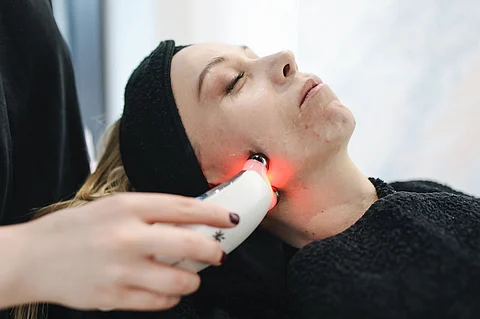The severity and persistence of these scars often relate to how early acne was treated, genetic factors, and whether the acne was picked or squeezed.
Which Treatments Work Best for Acne Scars?
Scientific evidence indicates that combination therapies are more effective than single treatments for treating acne scars. Combining techniques addresses different layers and textures of scarring. Below is a breakdown of the most supported acne scars treatment methods.
Microneedling with Platelet-Rich Plasma (PRP)
Microneedling uses fine needles to puncture the skin and stimulate collagen production. When combined with PRP—derived from the patient’s blood and rich in growth factors—it enhances skin regeneration. A 2024 study found that this combination outperformed microneedling with peels like TCA or Jessner’s.
Microneedling Combined with Chemical Peels
Combining microneedling with agents such as trichloroacetic acid (TCA), kojic acid, or hydrogen peroxide shows significantly better results than using each treatment alone. This approach treats both texture and discoloration. A large randomized controlled trial confirmed its superiority.
What Does the Research Say Overall?
A 2024 meta-analysis of 24 randomized controlled trials concluded that microneedling plus peels provided the best overall scar reduction and highest patient satisfaction rates among all studied options.


